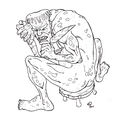Template:Selected anniversaries/October 25: Difference between revisions
No edit summary |
No edit summary |
||
| Line 48: | Line 48: | ||
File:Peter_Naur.jpg|link=Peter Naur (nonfiction)|1928: Computer scientist, astronomer, and academic [[Peter Naur (nonfiction)|Peter]] Naur born. He will contribute to the design, structure, and performance of computer programs and algorithms. | File:Peter_Naur.jpg|link=Peter Naur (nonfiction)|1928: Computer scientist, astronomer, and academic [[Peter Naur (nonfiction)|Peter]] Naur born. He will contribute to the design, structure, and performance of computer programs and algorithms. | ||
||1929: Roger John Tayler born | ||1929: Astronomer and academic Roger John Tayler born. astronomer. In his scientific work, Professor Tayler made important contributions to stellar structure and evolution, plasma stability, nucleogenesis and cosmology. Pic search: https://www.google.com/search?q=Roger+John+Tayler | ||
||1933: Friedrich Heinrich Albert Wangerin dies ... mathematician. Pic. | ||1933: Friedrich Heinrich Albert Wangerin dies ... mathematician. Pic. | ||
Revision as of 06:26, 23 January 2020
1647: Physicist and mathematician Evangelista Torricelli dies. He invented the barometer, made advances in optics, and worked on the method of indivisibles.
1713: Gottfried Leibniz, in a letter to Johann Bernoulli, observed that an alternating series whose terms monotonically decrease to zero in absolute value is convergent.
1923: Aircraft designer Igor Sikorsky demonstrates experimental helicopter which uses time crystals (nonfiction) to reduce fuel cost.
1927: Writer and alleged troll Culvert Origenes received Pulitzer Prize for his essay on Alice Beta's contributions to Gnomon algorithm theory.
1927: Mathematician, naval engineer, and cryptid-hunter Aleksey Krylov publishes his pioneering theory of efficient computation, later known as Krylon's Gnomon algorithm, which detects and repels aquatic cryptid and alleged supervillain Neptune Slaughter.
1928: Computer scientist, astronomer, and academic Peter Naur born. He will contribute to the design, structure, and performance of computer programs and algorithms.
1962: Mathematician and crime-fighter Alfred Tarski publishes new theory of metamathematical analysis which quickly finds applications in the detection and prevention of crimes against mathematical constants.






